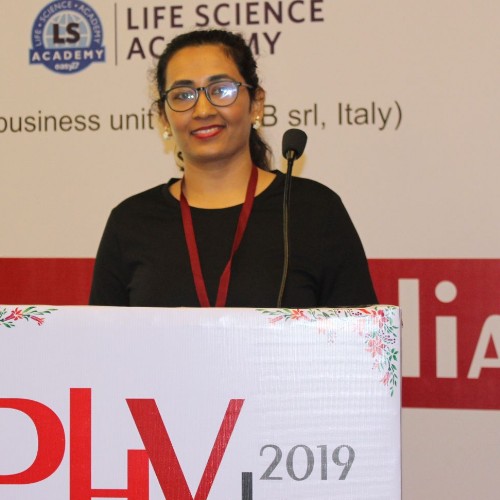Disclaimer: This article is written by a Safety Physician to provide pharmacovigilance (PV) operational perspective to experts from automation, artificial intelligence (AI), and other analytical domains.
Why do we need PV analytics in Inspections/ Audits processes of PV?
Pharmaceutical industry, and more particularly pharmacovigilance, is tightly regulated ship in terms of having strict laws and regulations set up by health authorities with stringent timelines to follow them.
To ensure that pharma companies follow the rules and regulations, it is mandatory for their PV systems to be audited by internal and external auditors and then again also by inspectors from various health authorities.
However, preparing for audit/inspections is a tremendous time consuming and costly process. This is one area of PV, that can obtain tremendous help from analytics systems. Also, with innovations in technology and automation processes, many times, processes are handled by robots, and audits and inspections are carried out for these robotic tools too. The data handled by robotic processes is varied, large and complex, and takes time for inspectors/auditors to manually understand and then identify issues in it.
An audit/inspection is carried out according to the following steps:
1. Communication regarding the audit/inspections
2. Introductory meeting with all stakeholders participating in audit/inspections
3. Conduct of audit/inspection
4. Interviews with relevant personnel involved in personnel
5. Process demonstration of PV systems
6. Document review conducted of documents involved in PV process
7. Exit meeting to discuss with involved stakeholder in audits/inspections
8. Follow up request to request additional details related to PV systems
9. Report preparation of audits/inspection to summarise the audit/inspection
10. Response to be provided by pharma companies that was audited/inspected
11. Follow up to ensure the root cause analysis (RCA), corrective and preventive actions (CAPA) are identified for findings and actions are taken to resolve the finding.
As we can see, the amount of data gathered, discussed, and identified is complex and huge during the entire process of audits/inspection and has to be checked if it is in compliance with the required regulatory guidelines. One additional challenge is multiple regulations and evolution of regulation with more requirements from health authorities for a better understanding of the safety of pharmaceutical products and, ultimately, better patient care.
An example
To give an example, I will quote paper published by MHRA. MHRA conducted 22 inspections in 1 year between April 2017 and March 2018, which took tremendous amount of time, money and resources of both, pharma companies and MHRA. During these inspections, MHRA identified 89 major findings in risk management plans, noncompliance in quality systems, analysis of safety data, and management of adverse drug reactions. However, if these inspection findings took time to be identified, inspectors had to spend hours with pharma companies, prepare these findings, involve multiple stakeholders, to finally release those findings to pharma companies. On the other hand, after receiving these findings, it again involved additional time at pharma companies end, to track these findings, to analyze them, find their root cause, and issue corrective and preventive actions. Lot of time, efforts and money is spent before the actual correction is implemented. These times is critical, as any delay is directly or indirectly affecting the safety of patients. E.g. if a finding is about not being able to identify a signal in relation to a product a product due to weak process of signal detection, by the time we strengthen the process by writing a new SOP, training people etc, we might be possibly lagging to identify signal for other products too.
What is PV analytics?
The concept of PV analytics is explained in previous articles on this blog. To clarify in short is that it’s a process of using different data techniques to analyze large and varied datasets to make informed decisions in effective manner.
When we talk about audits and inspection, PV Analytics data techniques will be used to identify cross functional PV systems to identify any weak links in these systems. Any company has interlinked SOPs such as PV SOPs are linked with clinical, regulatory, quality, legal departments, and others. Despite trainings and years of experience, the process set up in PV Systems is still not followed 100% and this weak links in the process are not immediately identified until an audit or inspection takes place. Because the data is so varied for each department and process is so complex, its almost impossible to do the identification of weak links on regular basis by operations team themselves. PV analytics can help in doing so, by being a watchdog of these data processes, and triggering an alert for a weak link to us before audit or inspections.
How?
Due to the above reasons, a good solution would be to look at application of analytical systems to automate, streamline or to identify tools that can make this process a less time consuming and more solid and cost effective. Hence, collaboration with IT solution providers selected according to their technical performance, but also to their level of expertise in quality and regulatory compliance is essential. We can streamline the SOPs interlinked with PV from other departments and apply tools that can identify a possible weak link or trigger a warning, whenever a process is not followed by other department which can have impact on PV audit or inspections. E.g. as a part of GCP compliance, Investigators should file the SUSARs in Site Trial Master File (TMF), PV professional send the SUSAR as part of their due diligence within timelines to Investigators, but if they are included in TMF or not, is not under PV purview. To check if TMF has SUSAR or not, we employ CRA, Site co-Ordinator’s etc, and yet one of the frequent finding in GCP inspection is SUSAR are not present in TMF.
If we put tools in place, that can identify a SUSAR submission from PV database until its presence in TMF. Many pharma companies do have such automated tools in place, but they are costly for small and medium pharma companies and yet have not been 100% effective.
Another aspect to keep in mind is the reconciliation between PV databases and clinical database. The reconciliation is performed on periodic bases between the two databases, finding potential discrepancies that otherwise would remain unnoticed. As an example, one of the frequent finding in audits/inspections is AE/SAE missing in PV database which is present in clinical database.
PV analytics can design cost efficient tools that can trigger such findings of discrepancies well within time, before an audit or inspection.
Another interesting aspect would be post audit/inspection follow up. Multiple audits/inspections happen every year for PV systems. It is very difficult to track findings of each audit/inspection manually, and many times findings from one audit are not rectified in timely manner, which then becomes a finding in next inspection or audit. But if we can track the findings in parallel manner, and do analysis thoroughly in time, we can avoid such issues.
The data audited/inspected is tracked by multiple different stakeholders, reports are made by different teams, and corrective and preventive actions are implemented by separate teams, which again is costly and time consuming. Often this leads to ineffective implementation of corrective actions. Preparing the findings, drafting a response to audit/inspection report requires a huge effort from various stakeholders, often by those who are not involved in the system audited/inspected. This leads to communication delay, where the corrective and preventive action proposed is not clear, does not reach on time to actual operations team responsible to implement it. If we have tools and analytics that can immediately identify any CAPA initiated by any department that affects the PV operations, we will have their agreement in terms of implementing the CAPA. The tools and analytics will help PV operations team to see the logic of RCA and CAPA and as it reached in time to them, they will be open to accept it.
Summary
For this purpose, numerous of current providers of pharmacovigilance solutions should also look into analytical solutions that will reduce time, cost and risk associated with Audits/Inspection process. The analytics that will help with compliance by pharma companies to Health Authorities to patient safety. But these solutions should be based on thorough knowledge of the actual reality of inspection or audit findings, and preferably be done internally or in close collaboration with quality and regulatory PV experts.
References
EU Legislation a regular audit pharmacovigilance system (Directive 2010 / 84 article 104)

Dr. Bhange is Associate Medical Director (PV) at EVERSANA. She is the author of a very interesting blog entitled “Drug Safety, Patient Safety, Medicine, Pharma, and More…“

 The use of new
The use of new